
Jeffrey Lynne is an English musician, singer-songwriter and record producer. He is the co-founder and currently the sole member of the rock band Electric Light Orchestra (ELO), which was formed in 1970, and as a songwriter has written most of the band's hits, including "Evil Woman", "Livin' Thing", "Telephone Line", "Mr. Blue Sky", "Don't Bring Me Down" and "Hold On Tight".
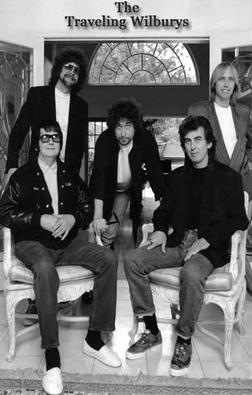
Traveling Wilburys were a British-American supergroup active from 1988 to 1991 consisting of Bob Dylan, George Harrison, Jeff Lynne, Roy Orbison and Tom Petty. They were a roots rock band and described as "perhaps the biggest supergroup of all time".
"I Drove All Night" is a song written and composed by American songwriters Billy Steinberg and Tom Kelly and originally intended for Roy Orbison. Orbison recorded the song in 1987, the year before his death, but his version was not released until 1992. Cyndi Lauper recorded the song and released it as a single for her A Night to Remember album. Her version became a top 10 hit on both sides of the Atlantic in 1989 and was also her final top 40 hit on the American pop charts. Lauper still regularly performs the song in her live concerts. The song has also been covered by Canadian singer Celine Dion, whose version topped the Canadian Singles Chart and reached number 7 on the US Adult Contemporary chart in 2003.
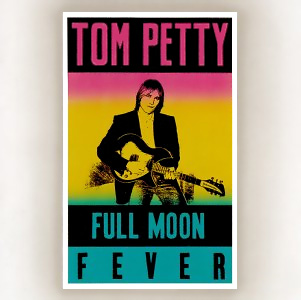
Full Moon Fever is the debut solo studio album by American musician Tom Petty, released on April 24, 1989, by MCA Records. It features contributions from members of his band the Heartbreakers, notably Mike Campbell, as well as Jeff Lynne, Roy Orbison, and George Harrison, Petty's bandmates in the Traveling Wilburys. The record shows Petty exploring his musical roots with nods to his influences. The songwriting is mainly collaborations between Petty and Lynne, who was also a producer on the album. Full Moon Fever became a commercial and critical success, peaking at No. 3 on the U.S. Billboard 200 and being certified 5× platinum in the United States and 6× platinum in Canada.

Mystery Girl is the twenty-second album by American singer Roy Orbison. It was his last album to be recorded during his lifetime, as he completed the album in November 1988, a month before his death at the age of 52, and it was released posthumously by Virgin Records on January 31, 1989. It includes the hit singles "You Got It", which was co-written by Orbison and his Traveling Wilburys bandmates Jeff Lynne and Tom Petty, and "She's a Mystery to Me", written by Bono and The Edge. The album was a critical and commercial success; it peaked at number 5 on the Billboard 200 in the United States, the highest position Orbison had achieved on that chart, and number 2 on the UK Albums Chart.

"Handle with Care" is a song by the British-American supergroup the Traveling Wilburys. It was released in October 1988 as their debut single and as the opening track of their album Traveling Wilburys Vol. 1. The song was the first recording made by the group, although it was originally intended as a bonus track on a European single by George Harrison. When he and Jeff Lynne presented the song to Harrison's record company, the executives insisted it was too good for that purpose, a decision that resulted in the formation of the Wilburys. The song was written primarily by Harrison, although, as with all the tracks on Vol. 1, the writing credit lists all five members of the band: Harrison, Lynne, Bob Dylan, Roy Orbison and Tom Petty.

The Traveling Wilburys Vol. 1 is the debut studio album by the English-American supergroup Traveling Wilburys, comprising George Harrison, Jeff Lynne, Bob Dylan, Roy Orbison and Tom Petty. It was released in October 1988 to commercial success and critical acclaim. Although Harrison had long planned to start such a band, the project came about through happenstance. Harrison was in Los Angeles and in need of a B-side for a single from his album Cloud Nine, which resulted in the participants collaborating informally on the song "Handle with Care" at Dylan's home.
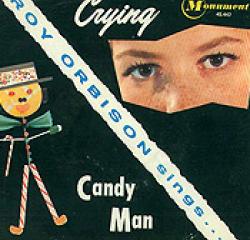
"Crying" is a song written by Roy Orbison and Joe Melson for Orbison's third studio album of the same name (1962). Released in 1961, it was a number 2 hit in the US for Orbison and was covered in 1978 by Don McLean, whose version went to number 1 in the UK in 1980.

"Running Scared" is a song written by Roy Orbison and Joe Melson and sung by Orbison. An operatic rock ballad, the recording of the song was overseen by audio engineer Bill Porter and released as a 45 rpm single by Monument Records in March 1961 and went to number one on the Billboard Hot 100 chart. "Running Scared" also reached No.9 in the UK Singles Chart. It sold over one million copies in the US alone. The song was included on Orbison's 1962 album Crying as the final track on the album.

Traveling Wilburys Vol. 3 is the second and final studio album by the Traveling Wilburys, a group consisting of George Harrison, Jeff Lynne, Bob Dylan and Tom Petty. It was released on October 29, 1990, as the follow-up to their 1988 debut, Traveling Wilburys Vol. 1. The band members again adopted pseudonyms for their contributions, using new names from the fictitious Wilbury brothers.
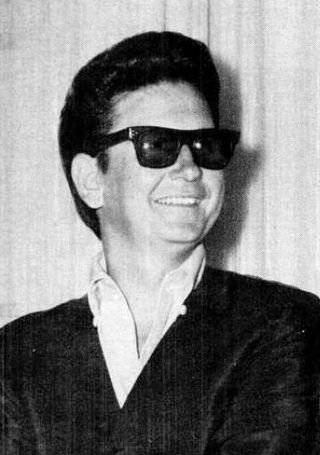
Roy Orbison was an American singer-songwriter who found the most success in the early rock and roll era from 1956 to 1964. He later enjoyed a resurgence in the late 1980s with chart success as a member of the Traveling Wilburys and with his Mystery Girl album, which included the posthumous hit single "You Got It". At the height of his popularity, 22 of Orbison's songs placed on the US Billboard Top 40 chart, and six peaked in the top five, including two number-one hits. In the UK, Orbison scored ten top-10 hits between 1960 and 1966, including three number-one singles.

"End of the Line" is a song by the British-American supergroup the Traveling Wilburys. It was the final track on their debut album Traveling Wilburys Vol. 1, released in October 1988. It was also issued in January 1989 as the band's second single. The recording features all the Wilburys except Bob Dylan as lead singers; George Harrison, Jeff Lynne and Roy Orbison sing the choruses in turn, while Tom Petty sings the verses. The song was mainly written by Harrison and was assigned to his publishing company, Umlaut Corporation. However, all five members of the group received a songwriting credit in keeping with the collaborative concept behind the Wilburys project.

"Free Fallin" is the opening track from American musician Tom Petty's debut solo album, Full Moon Fever (1989). The song was written by Petty and his writing partner for the album, Jeff Lynne, and features Lynne on backing vocals and bass guitar. The duo wrote and recorded the single in two days, making it the first song completed for Full Moon Fever.

"Learning to Fly" is a song by American rock band Tom Petty and the Heartbreakers. It was written in 1991 by Tom Petty and his writing partner Jeff Lynne for the band's eighth studio album, Into the Great Wide Open (1991). The entire song is based on four simple chords,. Released in June 1991 by MCA, it became a top hit for Petty and the Heartbreakers, topping the US Billboard Album Rock Tracks chart and peaking at number 28 on the Billboard Hot 100.
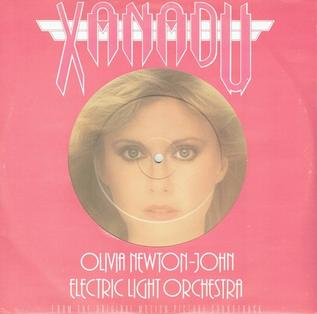
"Xanadu" is the title song from the soundtrack of the 1980 musical film of the same name. Written by Jeff Lynne of the English rock band Electric Light Orchestra (ELO), the song is performed by English-born Australian singer, songwriter and actress Olivia Newton-John, with Lynne adding parenthetic vocals in the style of his other songs on the Xanadu soundtrack, and ELO providing the instrumentation. It was Lynne's least favourite of his own songs. Released as a single in June 1980, it reached number one in several European countries and was the band's only UK number-one single when it peaked there for two weeks in July 1980. It was certified silver by the British Phonographic Industry. It also peaked at number eight on the US Billboard Hot 100.

"Oh, Pretty Woman", or simply "Pretty Woman", is a song recorded by Roy Orbison, written by Orbison and Bill Dees. It was released as a single in August 1964 on Monument Records and spent three weeks at number one on the Billboard Hot 100 from September 26, 1964, the second and final single by Orbison (after "Running Scared" to top the US charts. It was also Orbison's third single to top the UK Singles Chart.
"Not Alone Any More" is a song by the British–American supergroup the Traveling Wilburys from their 1988 album Traveling Wilburys Vol. 1. It was sung by Roy Orbison and serves as his main contribution to the album. The song was written mainly by Jeff Lynne, although all five members of the Wilburys are credited as songwriters.
"Heading for the Light" is a song by the British–American supergroup the Traveling Wilburys from their 1988 album Traveling Wilburys Vol. 1. It was written primarily by George Harrison but credited to all five members of the band. Harrison sings the song with Jeff Lynne, who also co-produced the track and, with Harrison, formulated the idea for starting the Wilburys. The song was issued as a promotional single in the United States, where it peaked at number 7 on Billboard's Album Rock Tracks chart. The song received a commercial release in Australia in 1989, where it peaked at number 88 on the ARIA singles chart.
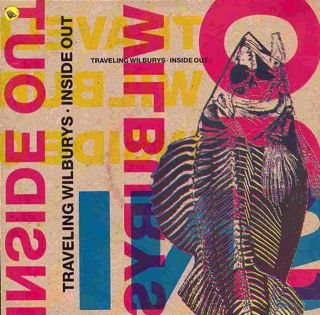
"Inside Out" is a song by the British–American supergroup the Traveling Wilburys from their 1990 album Traveling Wilburys Vol. 3. It was written by all the members of the band, which had been reduced to a foursome following the death of Roy Orbison in December 1988, and it was the first song they worked on for the album. The lyrics address environmental issues and describe a world turned yellow.
"California Blue" is a song written by Roy Orbison, Jeff Lynne, and Tom Petty. According to The Authorized Roy Orbison, Orbison recorded the song in April 1988 at Mike Campbell's garage in Los Angeles. "California Blue" was released as a single from Orbison's 22nd studio album, Mystery Girl, in July 1989, reaching the top 40 in Belgium, Ireland, and West Germany.

















